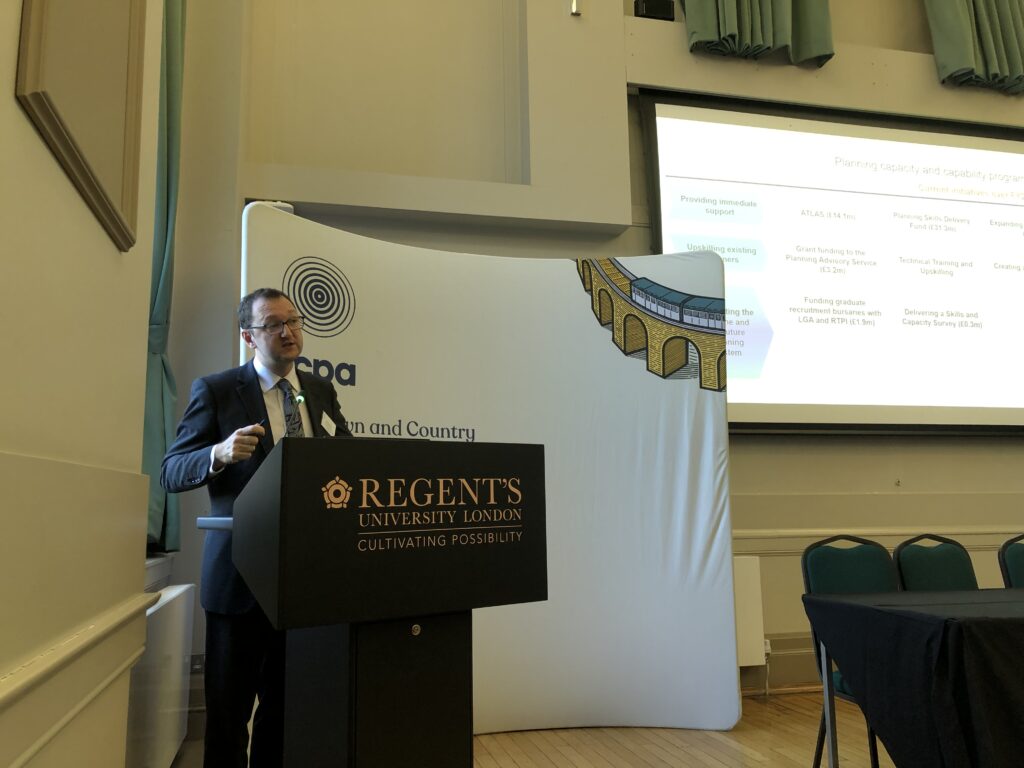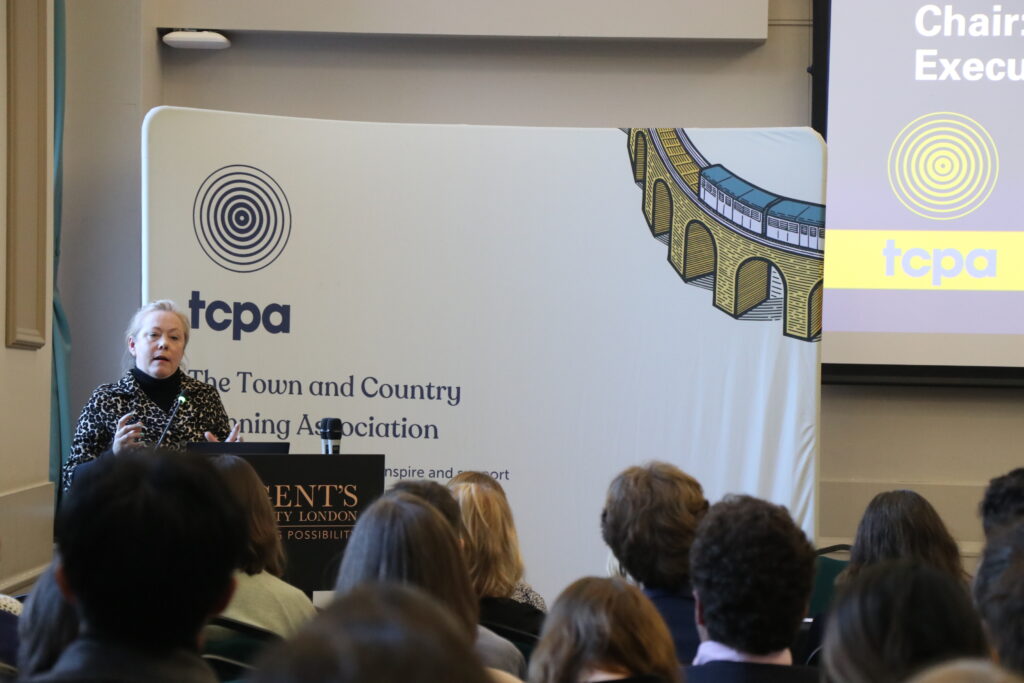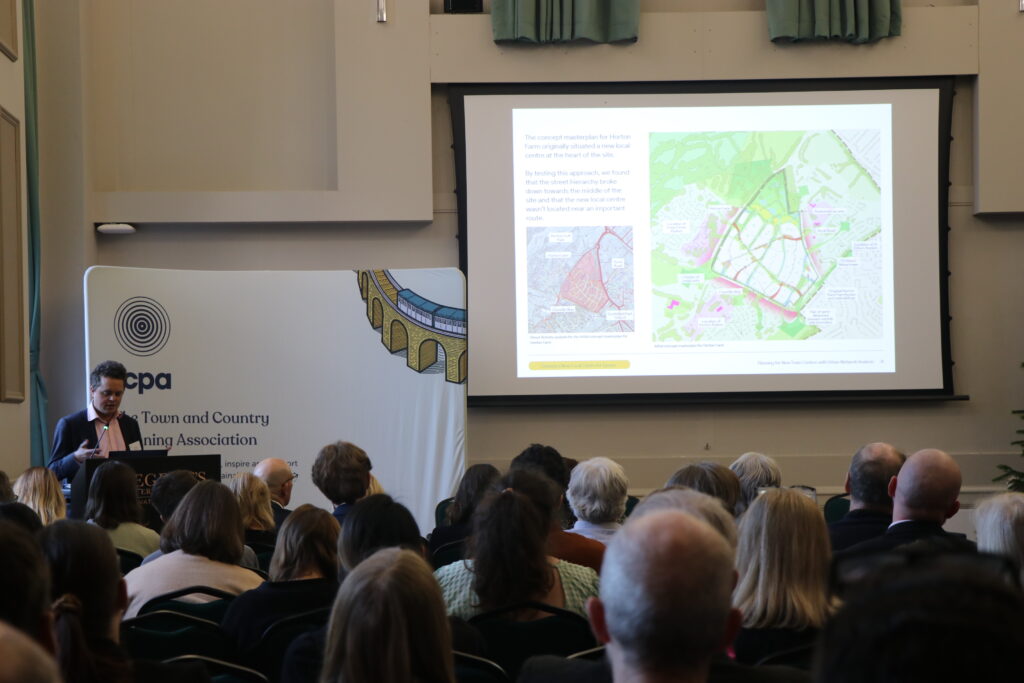Housing numbers are important, but we need to capture the imagination of the public and focus on delivering better places
This guest blog was written by Hal Mellen, Urban Designer for ADAM Architecture
In November, on a year that marks the 125th anniversary for the organisation originally set up to deliver new settlements under the banner of Garden Cities, the TCPA held its Annual Conference at Regent’s University in London.
Representatives from the New Towns Taskforce (Nick Raynsford) and the Ministry for Housing, Communities and Local Government (David Waterhouse) led the bill, before Gideon Amos MP and a range of former government advisors, private planning consultants, and public authority planners followed. While the speakers represented a variety of backgrounds, most shared an excitement around the prominence with which planning holds on the current political agenda, alongside scepticism around how change will be delivered.
Speakers shared an excitement around the prominence with which planning holds on the current political agenda, alongside scepticism around how change will be delivered.
Labour stormed to an unprecedented election win in July with a key pledge to use development to drive economic growth and deliver 1.5 million homes over their term in parliament, ending the housing crisis once and for all. Delivering such a feat will require the completion of 300,000 homes a year over the next five years, a threshold that has scarcely been met in the history of the country, requires significant building of council homes, and hasn’t happened for over half a century.
So how do they ‘plan’ to deliver on this mammoth task?


David Waterhouse (MHCLG)
The cabinet intends to create a new cohort of New Towns, the locations for which are currently being considered by the recently formed New Towns Taskforce. These settlements will provide additionality, meaning they will not contribute to the housing target identified through the proposed revised standard method. As a result, local authorities which host these new developments will still be under pressure to release land. On top of that, changes to the National Planning Policy Framework (NPPF) were rapidly consulted on after the general election, which relaxed restrictions on the green belt and reinstated mandatory housing targets, which surpassed previous totals in many areas.
Three waves of new settlements were delivered in the 20th century following the New Towns Act of 1946. Indeed, many planned communities were delivered before then according to Garden City Principles such as Letchworth and Welwyn. These schemes have often created healthy new communities which embrace nature whilst creating jobs, delivering a large number of homes, and generating revenues for the Treasury.
This is the root of support for the new generation of New Towns, but speakers rightly expressed scepticism surrounding their delivery. The new settlements of the 20th century relied heavily on government supported development corporations which employed hundreds of people (the Milton Keynes Development Corporation alone employed 1,700 people at its peak in the 1980s) and the use of compulsory land purchases, both of which require significant funding. Yet, neither of these instruments have been publicised nor seem forthcoming, with Rachel Reeves having ruled out further tax rises and indicated the department spending plans will be fixed for the next few years.
Meanwhile, instead of enabling local authorities to plan more effectively, speakers felt the NPPF changes would leave councils vulnerable to speculative development. This issue was painted clearly by Louise Morris, Head of Planning for Bath and North East Somerset Council, who saw a doubling in the number of houses they had to plan for from 717 to 1,466. She was open about her doubts that her team would be able to demonstrate a sufficient land supply for five years in the immediate term, despite being blessed with able and experienced colleagues in a council that never struggles to hire new talent.
Elsewhere, there was debate around the 20,000 home reduction in the mandatory housing target for London from 80,000 homes, despite just 35,000 being built last year.

Louise Morris (Bath and North East Somerset Council)

Attendees felt it was unclear whether increasing the vulnerability of local authorities to planning by appeal will improve housing delivery. This is underlined by the somewhat unsettling research from the LGA which has shown more than 1.1 million homes were granted planning permission in England over the last decade which haven’t been built. Therefore, many of those working in, or sympathetic to, people working in public practice feel they need assistance with delivering homes that are waiting to be built, or to enable them to better engage with land owners and take a more leading role in the development of their jurisdictions.
In practice, this could take the form of enabling councils to charge developers full council tax for every unbuilt home from the point the original planning permission expires, or to make it easier for councils to use compulsory purchase powers to acquire stalled housing sites. It was the threat of the latter by the GLA that pushed the Dulwich Estate, and many other land owners and developers, to embark on their own building programmes in the aftermath of the Second World War. In the case of the Dulwich Estate, this led to the design and delivery of some of the most desirable homes in South London in neighbourhoods which embrace principles of stewardship.
Alternatively, the government could learn from success stories like Hemel Garden communities, where a programme has been set up to liaise between local authorities and significant land owners to manage a large extension to the town. This is a positive example of vision-led planning where the collective imagination of the existing community is being leveraged to rethink the community Hemel is and can become, using housing delivery as a conduit. This approach has enabled discussions between the partners around phasing and funding, increasing confidence around delivery. Through developing a ‘charter’ and a spatial strategy, the consortium has thought carefully about how to ensure the right type of development is located in the right places, as well as how to address factors such as biodiversity and adapt to and mitigate against the effects of climate change.

This year’s conference considered how planning and placemaking can tackle the housing, health, climate and nature crises

Nathalie Bateman (Dacorum Borough Council and St
Albans City and District Council)
Beyond making good decisions on where housing goes, new neighbourhoods must also be designed with care to ensure they complement the movement networks of existing neighbourhoods whilst addressing needs of immediate residents.
Robbie Kerr, Design Director of ADAM Architecture and PLACE LOGIC, demonstrated how geospatial analysis can be used to complement experience in spatial planning and urban design to create better places. Decisions concerning the structure of urban form such as the block structure, distribution of centres, the mix of uses and the allocation of density all have significant impacts on the way a place functions. Owing to advancements in research and technology, it is possible to analyse these elements digitally and at pace, to complement existing design processes. Whilst community buy in and involvement is important during the planning process, so too is the role of the professional.

Robbie Kerr (ADAM Architecture and PLACE LOGIC)

Though the focus of the current government on housing numbers is important, there is an indisputable requisite to capture the imagination of the public and focus on delivering better places.
Though the focus of the current government on housing numbers is important, there is an indisputable requisite to capture the imagination of the public and focus on delivering better places. Alongside higher targets, local authorities require greater means to achieve them successfully. Otherwise, we risk ramping up permissions whilst failing to push the dial on quality or delivery. We may build a handful of houses, but we could fail to deliver significant numbers of homes in neighbourhoods that integrate with existing communities and guarantee long term value in all its guises.




